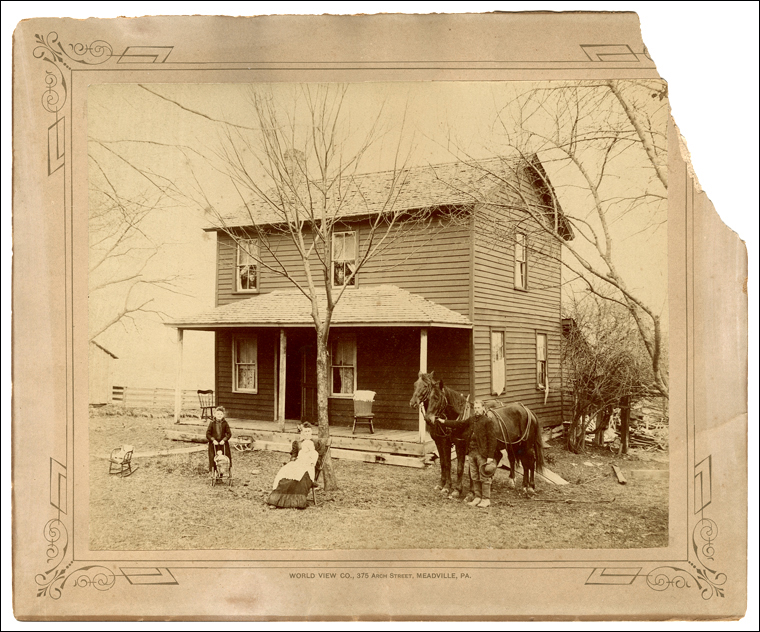

This large albumen print is mounted onto cardboard that is definitely not acid-free, and to make matters worse it was framed—for over a century—in a frame that had a wood backing. The wood knot pattern on the back of the mounted photo is from the migration of naturally-occurring acids and lignins from the wood backing.
Non-archival materials make up the original cardboard mount and glue adhered the albumen print to the backing board. Then the photograph was framed in a very acidic environment for a century. All this resulted in a very brittle artifact. Still, there are things you can do to preserve it.
Scan or Photograph the Original Object

Scanning photographs such as this with a desktop scanner is the first step in preserving one-of-a-kind family photographs.
If you don’t have access to a scanner another option is to take a photograph of the object with a digital camera or smartphone. Or, hire someone else to do it. The Photo Managers has an extensive roster of members that can scan your photographs for you.
There are significant benefits to working with scans.
• Safely handle printed copies of the scan rather than the original fragile photograph
• Scan at a high resolution so you can enlarge portions of the scan to see the faces and details better
• Send digital or hard copies to relatives for help in identifying people, places, and dates
• Share copies of the scan so extended family members can include it in their own family archives
• Archivally preserve the original in acid-free enclosures / acid-free boxes / archival mats and frames
Share with Family

Since there is now a scan of this old photo it is easy to enlarge sections of it to help identify people and places without fumbling around with a magnifying glass and risking further damage to the original photo through accidents or mishandling.
Acid-Free Storage and Presentation
Once you’ve copied your original, it’s time to safely store it using archival supplies.


Prints such as this can be placed in Crystal Clear Bags that have a re-sealable flap, as shown above. A sheet of White Card Stock was used to give additional structural support and rigidity. This is particularly important with delicate images.

Lastly, store your archival box somewhere in your living space such as a closet or shelf. Never store your photos and collections in attics, basements, or garages. These spaces are prone to greater temperature and humidity fluctuations, flooding, and to insect and animal infestations.
Contact Us
If you have any additional questions about preserving your old photos and anything else in your collection, or would you like more information on any of our museum-quality archival storage and presentation materials, please contact us here at Archival Methods. We’re always there to help with any archiving, storage, or presentation questions you may have.



